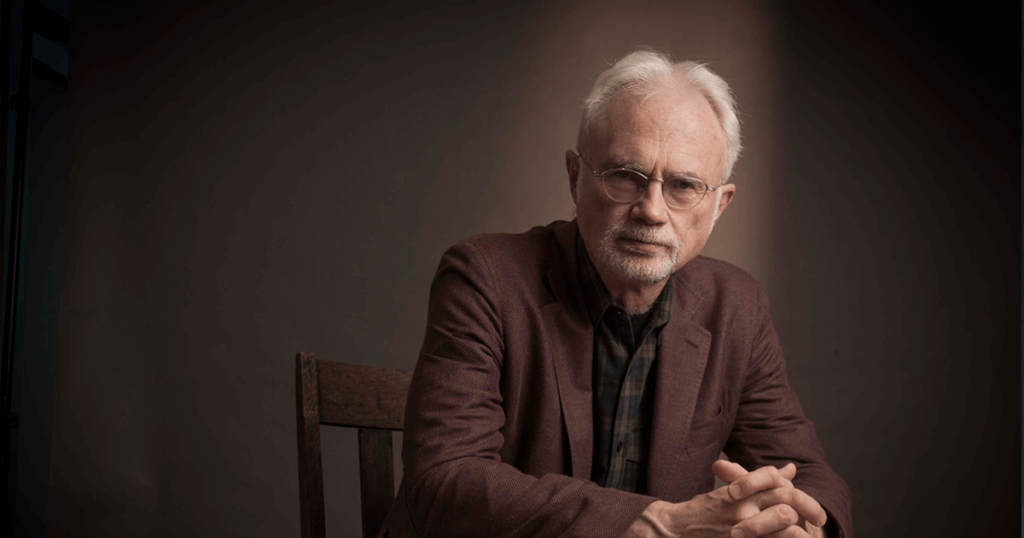
When I was growing up, my family would occasionally spend a weekend in St. Louis, making the two-and-half-hour drive from our home in Carbondale, Illinois, to shop, visit the planetarium, wander the zoo, and take in all those big-city entertainments that seemed so far removed from our semi-rural lives. Once, when I was 13, we spent a Saturday night attending a performance of the St. Louis Symphony. I don’t remember who was conducting that night—presumably Leonard Slatkin, who was the music director in the ’80s—but I do recall that Itzhak Perlman, who had been scheduled to play the Violin Concerto by Karl Goldmark, had to cancel due to illness and was replaced by Isaac Stern, who played the Brahms Concerto. (Not a shabby last-minute substitution, I’d say.) I also recall the piece that opened the program, a work with a funny name, or so I thought at the time. After all, I was used to compositions bearing such austere titles as Symphony No. 2 and String Quartet in A minor; John Adams’s Short Ride in a Fast Machine seemed both intriguing and weird.
Adams composed the piece in 1986, so I must have seen one of the first performances. Evident throughout are elements of the minimalist idiom that the composer is famous for, though this was all new to me at the time. The opening line on the woodblock—a steady series of quarter notes surrounded by evenly spaced rests in 3/2 time—sets up the entire work and gives it its rhythmic drive. Very soon, the trumpet comes in, doubling the woodblock at first, but eventually filling in some of the rests, thus creating an uncertainty, a feeling of tension, a wonderful instability. With the other instruments joining in, the music swells and contracts, but through it all is that incessant rhythm being very subtly altered; it’s as if the whole ensemble is teetering on the edge. Short Ride consists of several harmonic transformations, as well, as the music creeps from one key to another. Philip Glass, a composer with whom Adams is often associated, is another master of this sort of thing: taking a long line and putting it through a seemingly infinite number of barely discernible alterations, in both harmony and rhythm. It’s a sublime effect, once one becomes cognizant of it.
Appropriately enough for this work of mad perpetual motion, Adams marked the score, Delirando, that is, delirious. He ratchets up the intensity, the music feeling at once frenetic and controlled, but then he releases the tension in an ominous-sounding central section. A brilliant brass fanfare that’s almost Coplandesque leads then to a propulsive finish. Brief as the work is—it lasts no longer than four or five minutes—there’s always something new to discover, whether it’s a clever metrical manipulation or a lovely contrast in sonority: bright trumpets, low thumping percussion, droning, martial-like violins playing their ostinato figures. Adams had a very specific image in mind when composing this piece. “You know how it is,” he once said, “when someone asks you to ride in a terrific sports car, and then you wish you hadn’t?” The first time I heard it, however, a very different image formed in my mind. To a boy whose ken did not extend much beyond small-town Illinois, who grew up dreaming of cities, and who spent hours drawing sketches of imaginary downtowns filled with skyscrapers, the piece seemed to describe the very essence of urban America—restless, throbbing, exciting, and fast. Perhaps it was the excitement of the evening that lent this extramusical sensation: the traffic and noise of the city center, the dash from the car parked on a dark side street into the gilded, resplendent interior of Powell Symphony Hall. At any rate, I am remembering that intense and visceral sensation on this day when the composer of Short Ride in a Fast Machine turns 71. I’ve since come to admire his large-scale pieces, for example, Doctor Atomic and Dharma at Big Sur, but my interest in his work began more than three decades ago, witnessing a live performance of that short, kinetic, blazing orchestral fanfare.
To John Adams, happy birthday.
Watch Marin Alsop lead the BBC Symphony Orchestra in John Adams’s Short Ride in a Fast Machine, from a BBC Proms concert in 2014:


